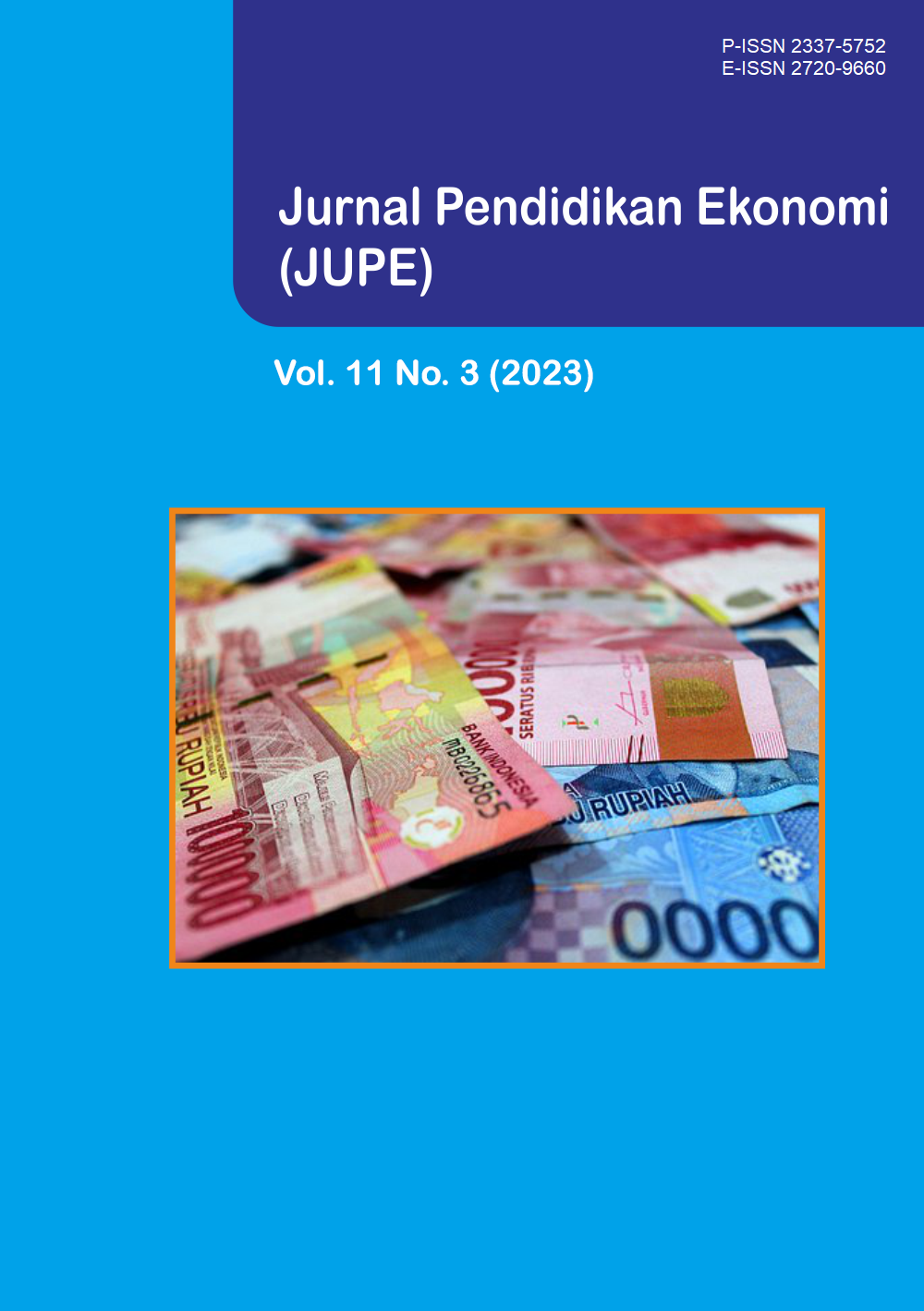Pengaruh desain pembelajaran, kualitas dosen, interaksi dengan dosen, dan harapan terhadap kinerja akademik dengan dimediasi kepuasan pembelajaran pada mahasiswa
DOI:
https://doi.org/10.26740/jupe.v11n3.p343-354Keywords:
academic performance, learning design, lecturer quality, interaction with lecturers, expectations, satisfactionAbstract
This study aims to determine the direct and indirect effect of learning design, quality of lecturers, interactions with lecturers, and expectations on academic performance mediated by student satisfaction in Economics Education at Sebelas Maret University. The method used in this study was a quantitative survey method with a population of Economics Education students at Sebelas Maret University and a sample of 224 students. The sampling technique in this study was proportionate stratified random sampling and the data collection technique used a questionnaire. This study used data analysis techniques, namely path analysis and hierarchical regression analysis with SPSS 25. The results obtained in this study are: (1) There is a direct positive and significant influence between learning design, lecturer quality, interaction with lecturers, and expectations on student satisfaction, (2) There is a positive and significant direct effect between learning design, lecturer quality, interaction with lecturers, and expectations on academic performance, (3) There is a positive and significant direct effect between satisfaction on academic performance (4) There is a positive and significant indirect effect between learning design, lecturer quality, interaction with lecturers, and expectations on academic performance through satisfaction. The implication of this research is that there is learning design, lecturer quality, interaction with lecturers, and expectations to increase student satisfaction and academic performance in online learning.
Downloads
Downloads
Published
How to Cite
Issue
Section
License
Copyright
- Authors retain copyright and grant the journal right of first publication with the work simultaneously licensed under a Creative Commons Attribution License that allows others to share the work with an acknowledgment of the work's authorship and initial publication in this journal.
 Abstract views: 151
,
Abstract views: 151
, PDF Downloads: 242
PDF Downloads: 242











